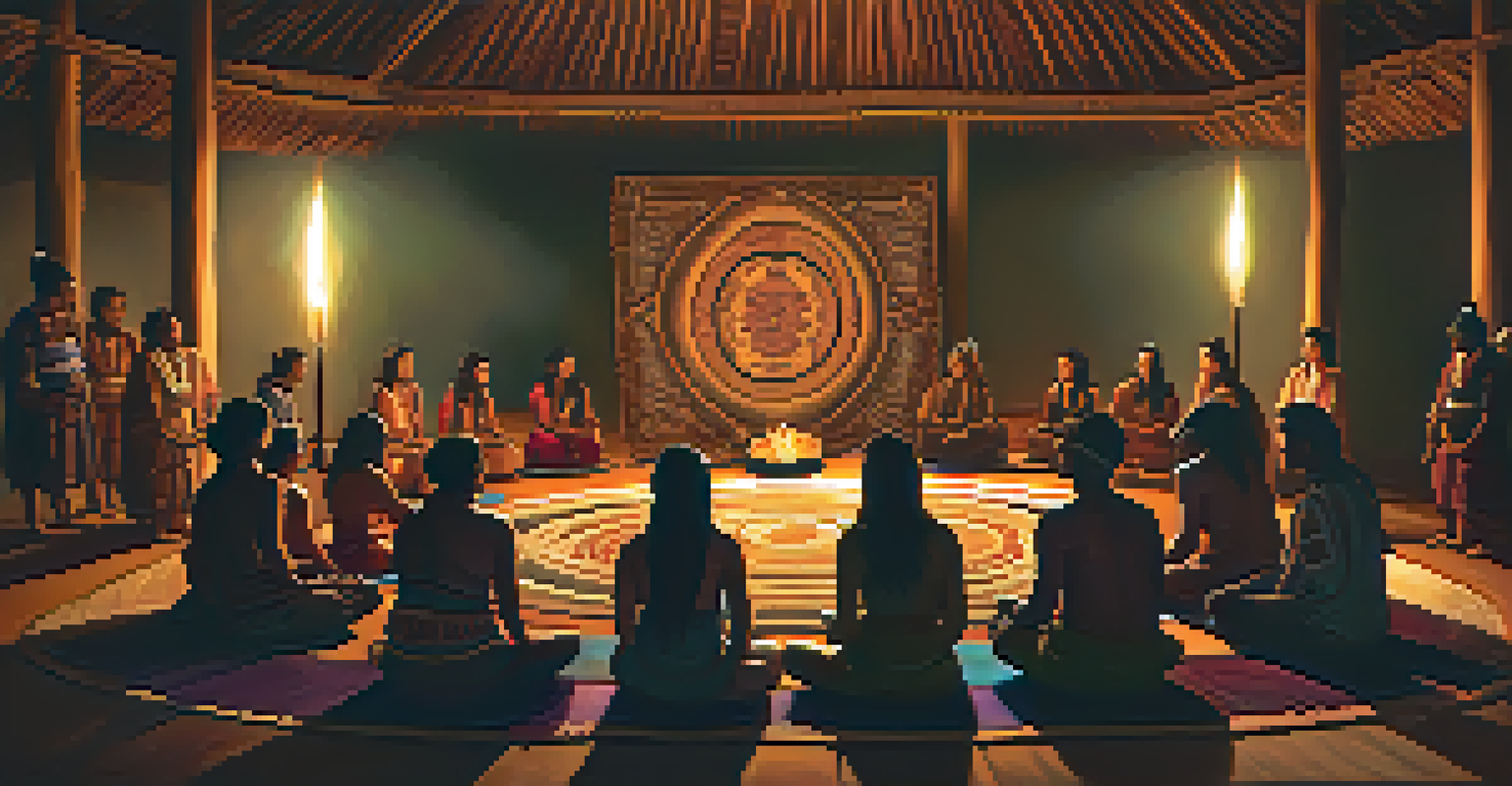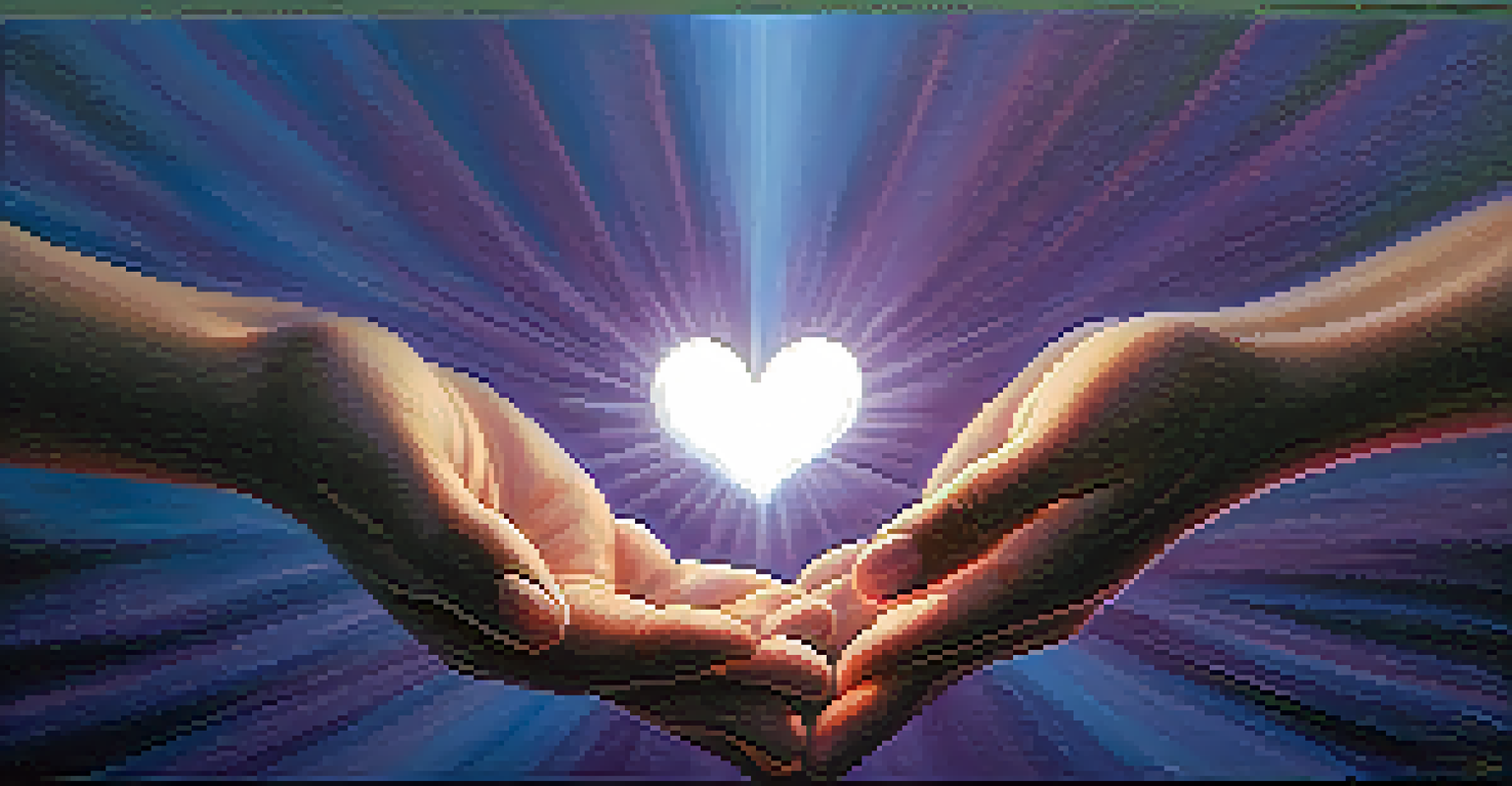Forgiveness and Ayahuasca: A Journey Towards Healing

Understanding Forgiveness: A Path to Inner Peace
Forgiveness is often seen as a gift we give to others, but it's predominantly a gift we give to ourselves. By releasing feelings of resentment and anger, we open the door to inner peace and emotional healing. This process, while challenging, can lead to profound changes in our mental and emotional well-being.
Forgiveness is not an occasional act; it is a constant attitude.
Many people struggle with the concept of forgiveness, particularly when they've been deeply hurt. It's essential to recognize that forgiveness doesn't mean condoning the behavior that caused the pain; rather, it's about freeing ourselves from the burden of negative emotions. This understanding can make the journey toward forgiveness feel more achievable.
Incorporating practices like meditation or therapy can help foster the mindset needed for forgiveness. Yet, for some, traditional methods might not suffice. This is where alternative healing practices, such as ayahuasca ceremonies, can come into play, offering a unique approach to this complex emotional process.
What is Ayahuasca? A Brief Overview
Ayahuasca is a traditional Amazonian brew made from the Banisteriopsis caapi vine and other plants, often used in spiritual ceremonies. It contains a powerful psychoactive compound called DMT, which can induce intense visual and emotional experiences. For many, this journey can lead to deep introspection and a new understanding of themselves and their relationships.

The brew has been used for centuries by indigenous cultures for healing and spiritual purposes. Participants often report transformative experiences, including insights into their past traumas and relationships. This aspect makes ayahuasca an intriguing tool for those seeking forgiveness and healing.
Forgiveness Benefits Inner Peace
Forgiveness is a crucial step toward achieving inner peace and emotional healing by releasing negative emotions.
It's important to approach ayahuasca with respect and understanding, recognizing its potential to evoke challenging emotions. Participants are often guided by a shaman or experienced facilitator, ensuring a safe environment for exploration. This guidance can be crucial for navigating the emotional landscape that ayahuasca reveals.
The Role of Ayahuasca in Forgiveness
Ayahuasca can act as a catalyst for forgiveness, helping individuals confront and process past traumas. During ceremonies, participants often confront painful memories, allowing for a deeper understanding of their emotions and the root causes of their resentment. This confrontation can lead to a genuine desire to forgive, both oneself and others.
The weak can never forgive. Forgiveness is the attribute of the strong.
Moreover, the experience can foster a sense of connection to others, promoting empathy and compassion. As participants gain insights during their journey, they may find it easier to see situations from different perspectives, paving the way for forgiveness. This shift in perception can be incredibly liberating.
Ultimately, the healing journey with ayahuasca is unique for each individual. While some may experience immediate shifts in their feelings toward others, for others, the process may take time and reflection. This variability highlights the importance of patience and self-compassion when navigating forgiveness after an ayahuasca experience.
Preparing for an Ayahuasca Ceremony
Preparation is a vital step before participating in an ayahuasca ceremony. Many recommend a period of physical and emotional cleansing, which can include dietary changes and meditation. This preparation helps participants approach the experience with an open mind and clear intention, making the journey more meaningful.
It's also essential to set intentions for the ceremony, particularly regarding forgiveness. By clearly defining what you hope to release or understand, you can guide your experience and focus on healing. Writing down your intentions can serve as a helpful reminder during the ceremony.
Ayahuasca's Role in Healing
Ayahuasca can facilitate forgiveness by helping individuals confront past traumas and gain new perspectives.
Lastly, finding a reputable and experienced facilitator is crucial for a safe experience. A trusted guide can help create a supportive environment and provide important context before, during, and after the ceremony. This support can make a significant difference in the overall experience and subsequent emotional processing.
The Experience: What to Expect
During an ayahuasca ceremony, participants often enter a deeply introspective state. The experience can include vivid visions, emotional releases, and a heightened sense of awareness. These elements combine to create a safe space for exploring feelings of hurt and resentment, making it easier to confront and process these emotions.
While many report positive outcomes, it's important to note that the experience can also be challenging. Some may face difficult memories or emotions they have long suppressed. This aspect is a crucial part of the healing journey, as confronting these feelings is often necessary for true forgiveness and resolution.
Having a supportive community, whether it's fellow participants or facilitators, can be invaluable during this process. Sharing experiences and insights afterward can help integrate the profound realizations gained during the ceremony, reinforcing the path toward forgiveness and emotional healing.
Post-Ceremony Integration: Embracing Change
After an ayahuasca ceremony, the integration phase is where the real work begins. Participants are encouraged to reflect on their experiences and how they can apply the insights gained to their everyday lives. This process is essential for translating the emotional breakthroughs into tangible changes.
Journaling can be an effective tool during this phase, allowing individuals to articulate their thoughts and feelings. By writing about their experiences, participants can better understand the lessons learned and the emotions they need to process further. This reflection can deepen the healing journey and reinforce the intentions set before the ceremony.
Integration Is Key Post-Ceremony
The integration phase after an ayahuasca ceremony is essential for applying insights gained to daily life and fostering lasting change.
Additionally, seeking support from therapists or support groups can enhance the integration process. Sharing experiences with others who understand the journey can provide encouragement and foster a sense of community. This ongoing support can be vital in maintaining the healing momentum initiated through ayahuasca.
The Transformative Power of Forgiveness
Forgiveness is a powerful tool that can transform our emotional landscape. By letting go of grudges and resentment, we create space for love, compassion, and understanding. This transformation not only benefits our mental health but can also improve our relationships with others, fostering deeper connections.
The journey toward forgiveness may be a challenging one, but it is undoubtedly rewarding. Ayahuasca can serve as a profound ally in this process, providing insights and facilitating healing. As we confront our pain, we often discover newfound strength and resilience within ourselves.

Ultimately, the combination of forgiveness and ayahuasca can lead us to a more fulfilling and peaceful life. By embracing this journey, we can heal old wounds and create a brighter future, both for ourselves and those we love. The power of forgiveness is not just a personal journey; it's a collective healing that can ripple through our communities.